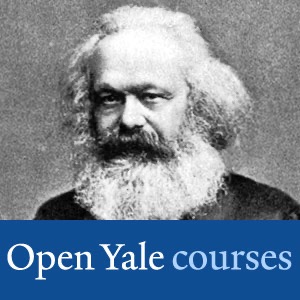13 - Marx's Theory of Class and Exploitation
Update: 2011-04-11
Description
In order to move from a theory of alienation to a theory of exploitation, Marx develops a concept of class and of the capitalist mode of production. He developed these in The Communist Manifesto, the Grundrisse and Das Kapital. Marx argues that what sets the capitalist mode of production apart from the commodity mode of production is not only the accumulation of money; the capitalist mode of production is characterized by the use of labor power as a commodity to create more value. The capitalist compensates the laborer enough for his labor power to reproduce the commodity (the labor power), but the laborers' power produces additional value: a surplus value for the owner. The worker is exploited when he does not keep or control the value created by his own labor power. Marx argues that the capitalist system forces people into one of two classes: the bourgeoisie and the proletariat. This class dichotomy did not describe accurately social structure in Marx time, when a sizable class of self-employed existed. Marx predicted that this "middle class" will disappear; instead it grew in size over the twentieth and twenty-first centuries.
Comments
In Channel





